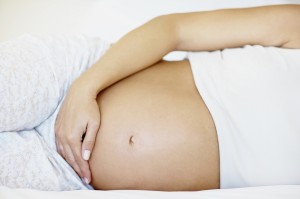
Muscle Pain During Pregnancy: Part 2
Leave a CommentEditor’s note: Over the course of the next few weeks, we will be rolling out a three part series to common symptoms during pregnancy and how to treat them!
Help! What Is This Pain I Am Experiencing During My Pregnancy?
You’re pregnant! It’s an exciting and busy time for you. So, why are you having pain? We continue with part 2 of symptoms during pregnancy.
Sciatica presents as pain, numbness, weakness and/or tingling present in the lower back, buttock, groin, or leg. The symptoms can be present throughout the leg or just in the upper or lower leg. This is caused by irritation or compression of the nerve from the spine that travels into the leg.
How can I cope?
- Exercises for stretching and strengthening appropriate muscles will decrease tension and improve the muscular stability of the core and pelvic areas.
- Use of heat or ice to the area can be helpful.
- Physical therapy will help to prescribe the appropriate stretches, strengthening exercises and posture and body mechanics training to decrease the stress on this area.
Hip pain
Hip pain is very common during pregnancy and occurs more often in the third trimester. This is likely due to the increased hormones, the increased weight that your hips need to support, the change in how you are walking, and postural changes that occur with all the changes in your body during pregnancy. Additionally, women are sleeping alternating on the right and left sides which increases the pressure on the hip region. Muscular tension, joint pain, and bursitis can occur as a result.
What helps?
- Good posture in both standing and sitting will help to keep the hips in a more neutral position.
- Wear comfortable, supportive shoes, and avoid high heels.
- When lying on your side, place a pillow between your knees and underneath your belly to support the area.
- Participate in regular exercise to strengthen the core muscles and stretch the tight ones.
- Practice good body mechanics with lifting, carrying and positional changes to avoid increased stress on the hip joints.
- See a physical therapist for help to assist with stretching, strength exercises, posture and body mechanics with daily activities.
If you are experiencing any of these symptoms and need help with relieving your pain, please contact one of our Women’s Health Physical Therapists. We can help to teach you the appropriate strengthening and postural exercises, stretches, body mechanics for safe performance of activities, and soft tissue mobilization to decrease muscular pain and spasms.
Stay tuned for part 3 coming soon!

